Behind the Scenes of an Exhibition – Act 1
A selection of the works of the Terra Sancta Museum (TSM) will be departing for Lisbon very soon. An exhibition entitled Theatrum Mundi: Royal Gifts to the Holy Sepulchre, Jerusalem will be opening at the Calouste Gulbenkian Museum in Portugal. But before this great departure, let us take you behind the scenes of this outstanding, upcoming event!
Every exhibition begins with an idea, and this idea was born in Portugal in the mind of the current director of the Calouste Gulbenkian Museum, Professor António Filipe Pimentel. The inspiration took hold because of a Portuguese group that wanted to organize an exhibition in collaboration with the Custody of the Holy Land. Though this initial project did not succeed, Pimentel was eager to bring it to life in the Gulbenkian Museum. Professor Pimentel then took charge of the curatorship along with Jacques Charles-Gaffiot, exhibition member of the Scientific Committee of the Terra Sancta Museum, and André das Neves Afonso, Curator of Goldsmithing and Jewelry at the Gulbenkian Museum.
In describing the search for the title and proposed theme of the exhibition, Jacques Charles Gaffiot explains: “The goal was to offer an event especially intended for Portugal without repeating the exhibition which took place in Versailles on the Treasury of the Holy Sepulcher (Treasury of the Holy Sepulchre: Gifts from the European Royal Courts in Jerusalem from April 16 to 14 July 2013)“. In this way, the two Commissioners decided to adopt a “chronological” approach to understanding the historical context in which these works of art accumulated in Jerusalem, at the Custody of the Holy Land. Thus, the name of the exhibition Theatrum Mundi. Royal Gifts to the Holy Sepulchre (Jerusalem) flowed from this approach, as did the various sub-parts that later unfolded.
The next step in the genesis of the exhibition was the selection of works of art. Jacques Charles-Gaffiot, a connoisseur of the Custody’s collections, initially proposed a list. The list was eventually revised to better fit the intended space and better convey the stories that the curators wanted to share. Many paintings were also added to the project to create a dynamic of dialogue among the works presented. Such was the case with a painting representing St. Helena and the Invention of the Holy Cross (from the National Museum Machado de Castro) which will be placed alongside other objects related to this relic.
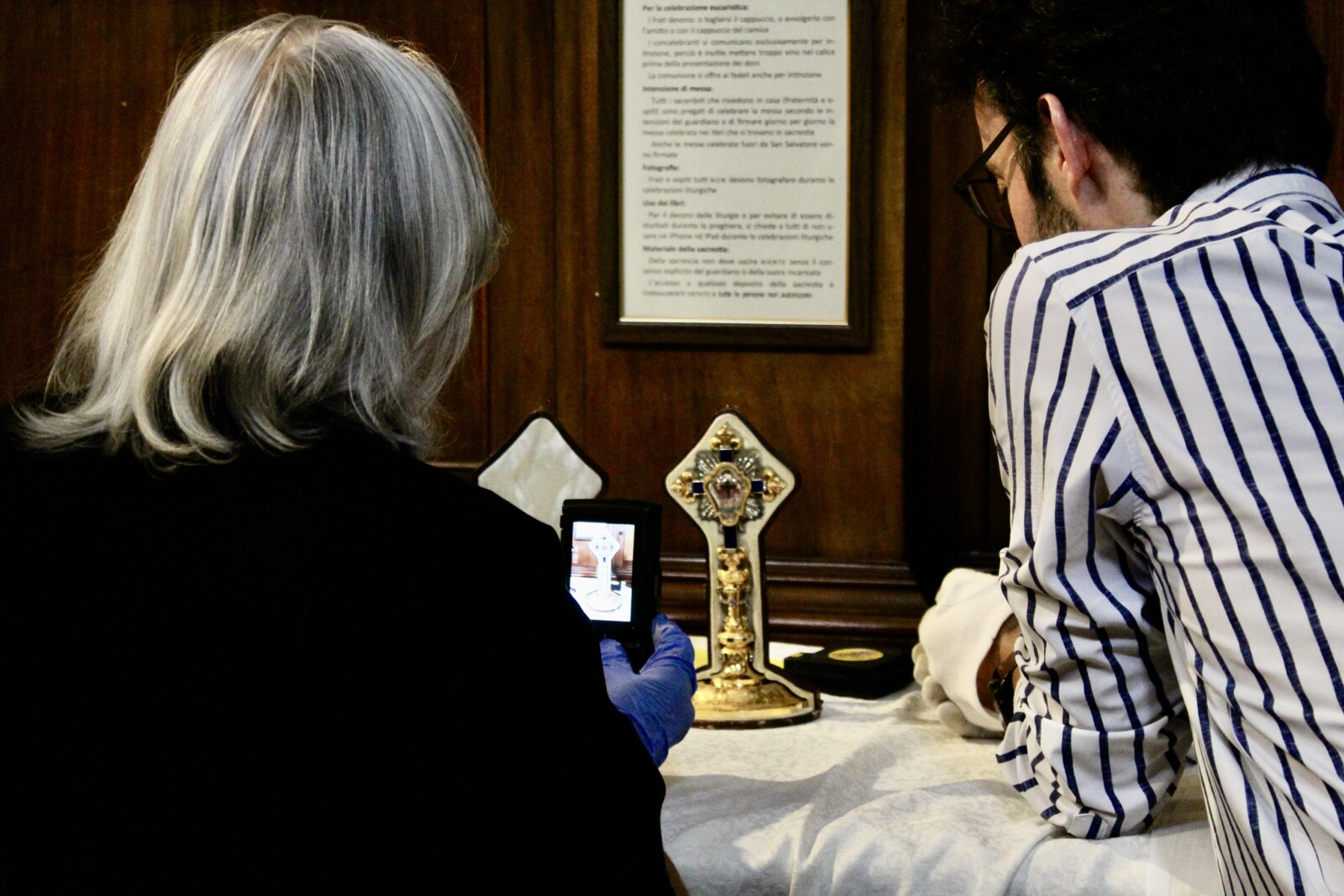
Et si les dons portugais de la Custodie furent largement mis à l’honneur dans cette liste, la Gulbenkian y incorpora aussi des prêts provenant d’autres musées européens, ce qui n’était pas le cas à Versailles. On y retrouve par exemple une maquette en marbre du IVe-Ve siècle, représentant l’édicule du Saint-Sépulcre de la basilique constantinienne, prêtée par le musée de Narbonne. Il est aussi prévu d’exposer le plus vieil exemplaire conservé du voyage d’Egérie provenant de la bibliothèque d’Arezzo. Enfin, le dernier élément pris en considération dans le choix des œuvres est leur coût d’expédition au Portugal. En effet, l’envoi d’un objet nécessite non seulement une assurance mais aussi la fabrication d’une caisse de transport dédiée. De nombreuses pièces ont ainsi dû être retirées et remplacées, en conservant au maximum les pièces maîtresses indispensables à la narration générale du projet.
And although the Portuguese gifts of the Custody filled the list, Gulbenkian further included loans from other European museums, which had also not been the case at Versailles. One finds, for example, a marble model from the 4th-5th century, representing the aedicule of the Holy Sepulchre from a Constantinian basilica, on loan from the Museum of Art and History of Narbonne. The exhibit will also include the oldest preserved copy of the voyage of Egeria from the library of Arezzo. The final element which had to be taken into consideration in the selection of the works was the cost of shipping to Portugal. In fact, transporting an artifact requires not only insurance but also the manufacture of a customized crate. Many items thus had to be removed and replaced, while still striving as much as possible to preserve those parts essential to the overall story of the project.
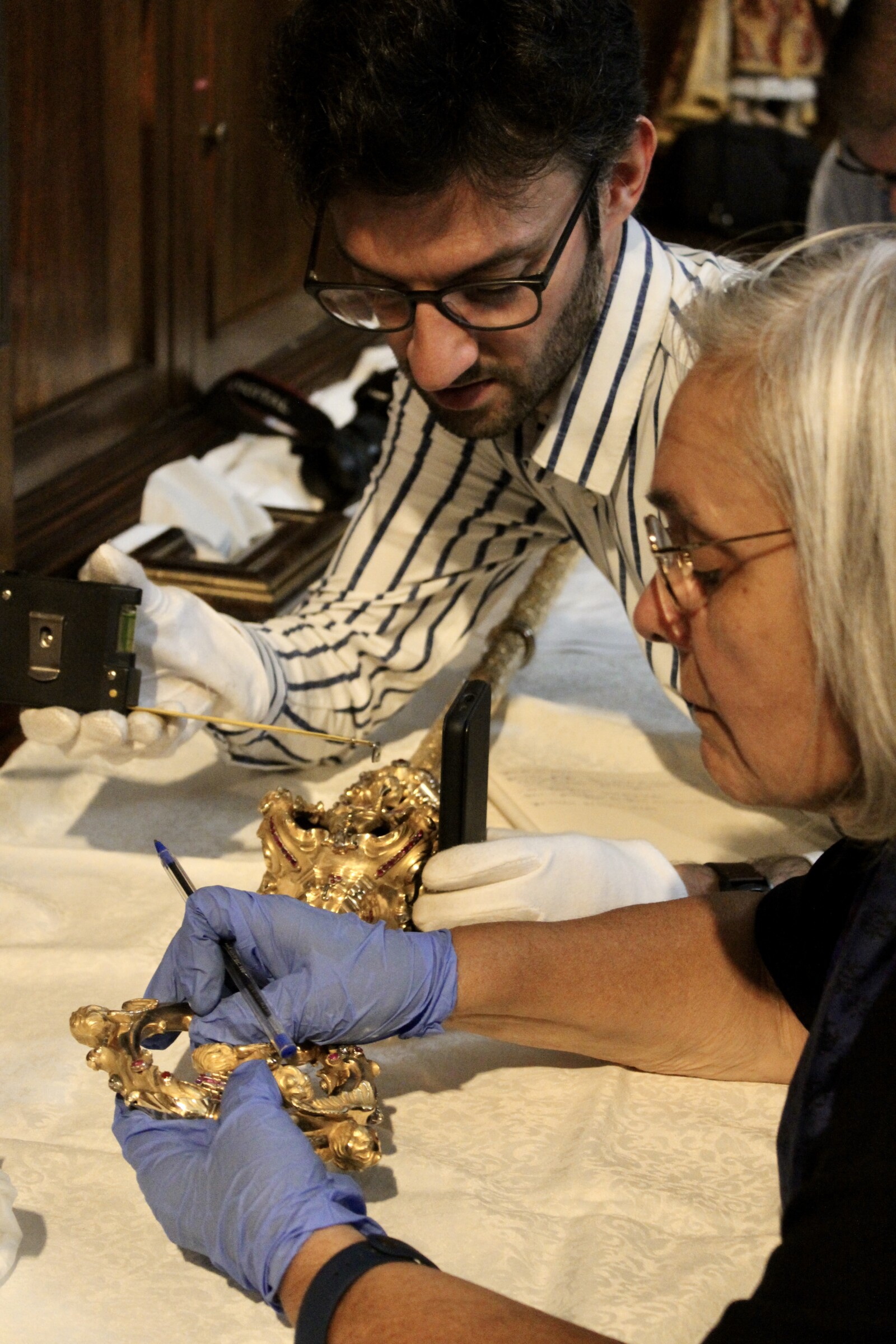
It was also necessary to inspect the actual artifacts. Thus André Afonso, accompanied by Mariano Piçarra, Coordinator of Projects and Installations of the Calouste Gulbenkian Museum, went to Jerusalem for the first time to finalize the loan agreement with the Custody, where they were able to finally see the works intended for exhibition. It was on this occasion that the team realized that some of the items were in need of restoration.
A second team therefore moved to Jerusalem at the end of September. This time André came with two renowned experts: Belmira Maduro, metal’restorer at the José de Figueiredo National Laboratory, and Rui Xavier, curator of the collection of Asian enamel and head of preventive conservation at the Gulbenkian Museum.
This new team had mission of writing up condition reports on the selected objects. For several days, the experts dissected each object, seeking to extract as much information as possible in order to properly facilitate their transportation and restoration. The experts dissected the objects in both a literal and figurative sense, disassembling each object with a finesse and assurance that a surgeon would have envied.
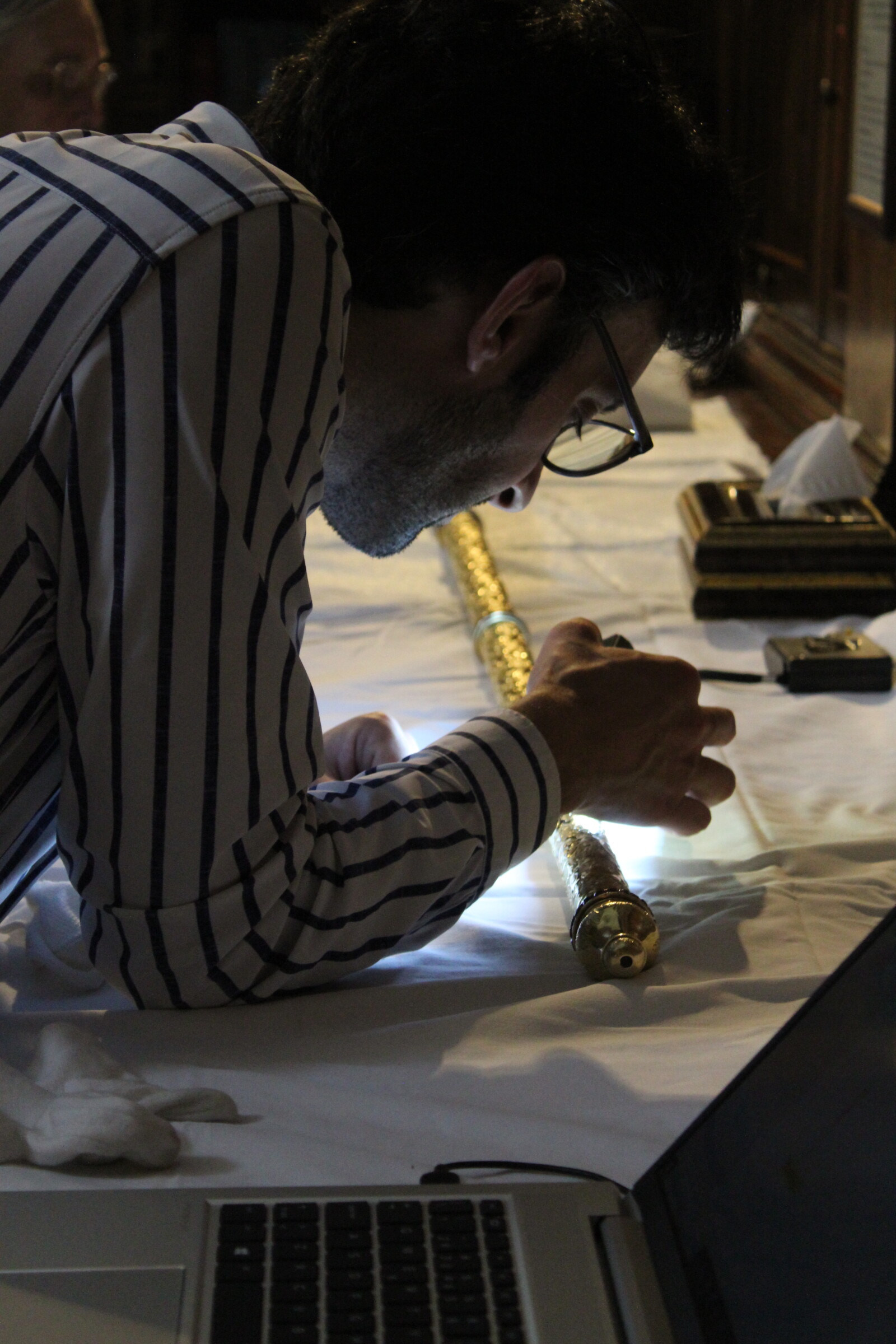
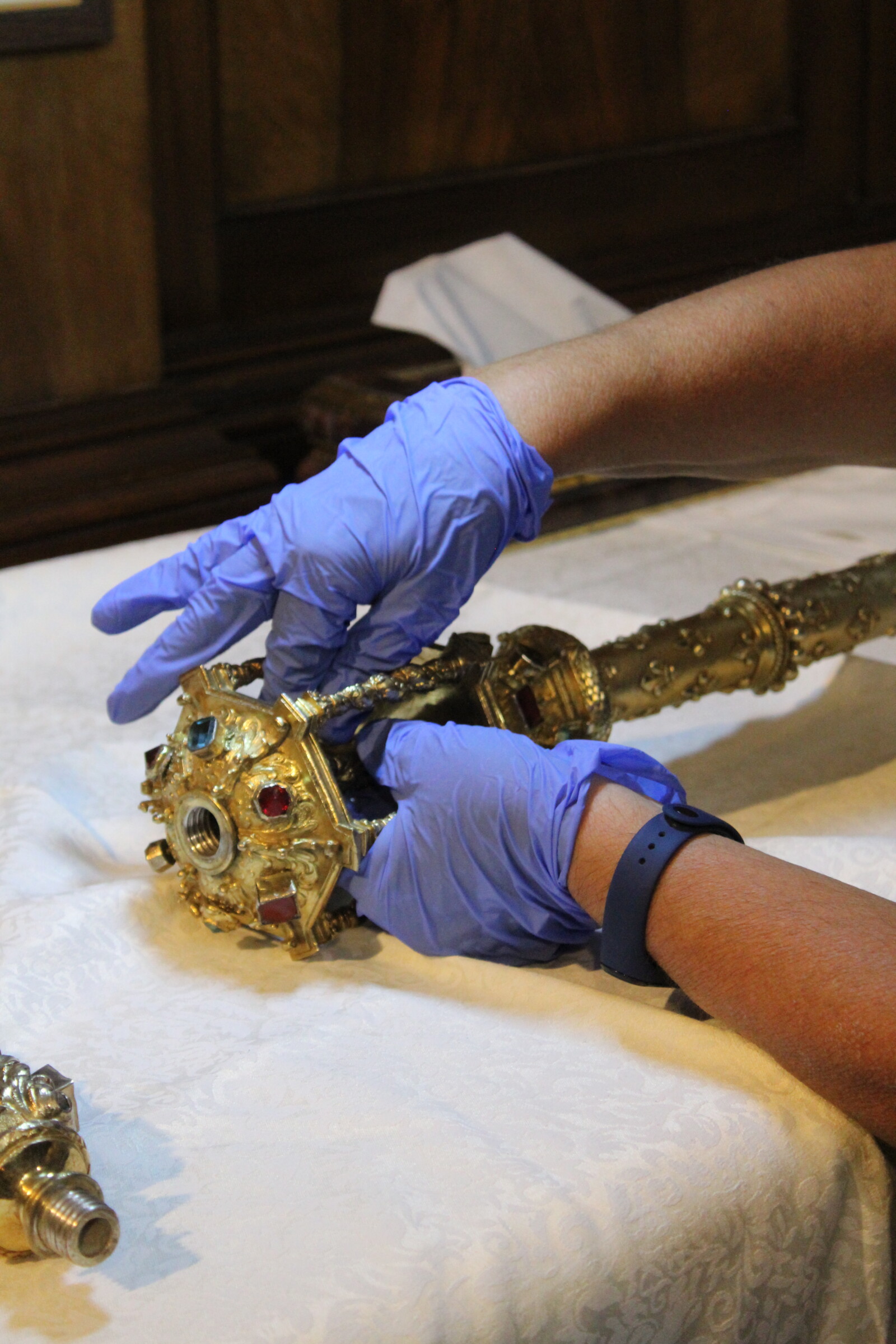
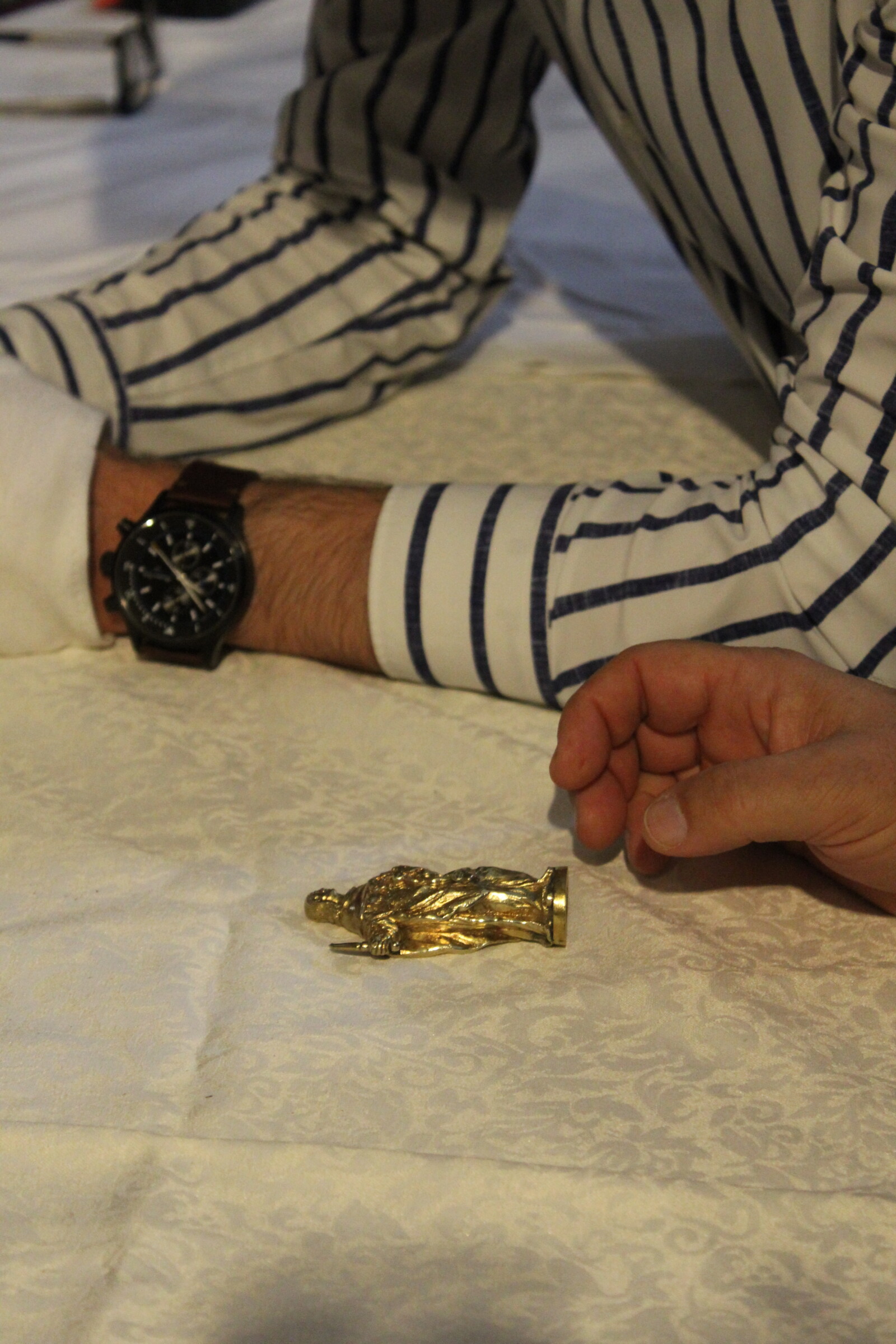
They tirelessly turned and twirled around objects, stopping to examine an element or detail. There was many a twinkling eye as some new treasure was extracted from the reserves of the Custody.
The analysis was sometimes tedious: as when a pair of solid silver candle holders measuring over 2m40 made observation difficult due to its large size. But when we asked the team about the exhibition, their response was not long in coming: “I think that it will be THE exhibition, the major exhibition of the year for the Gulbenkian,” asserted Rui Xavier who was followed by the statement, “It’s hard to imagine anything more beautiful than seeing the gifts of Charles III of Bourbon to the Custody,” from his colleague André, along with a beaming smile.
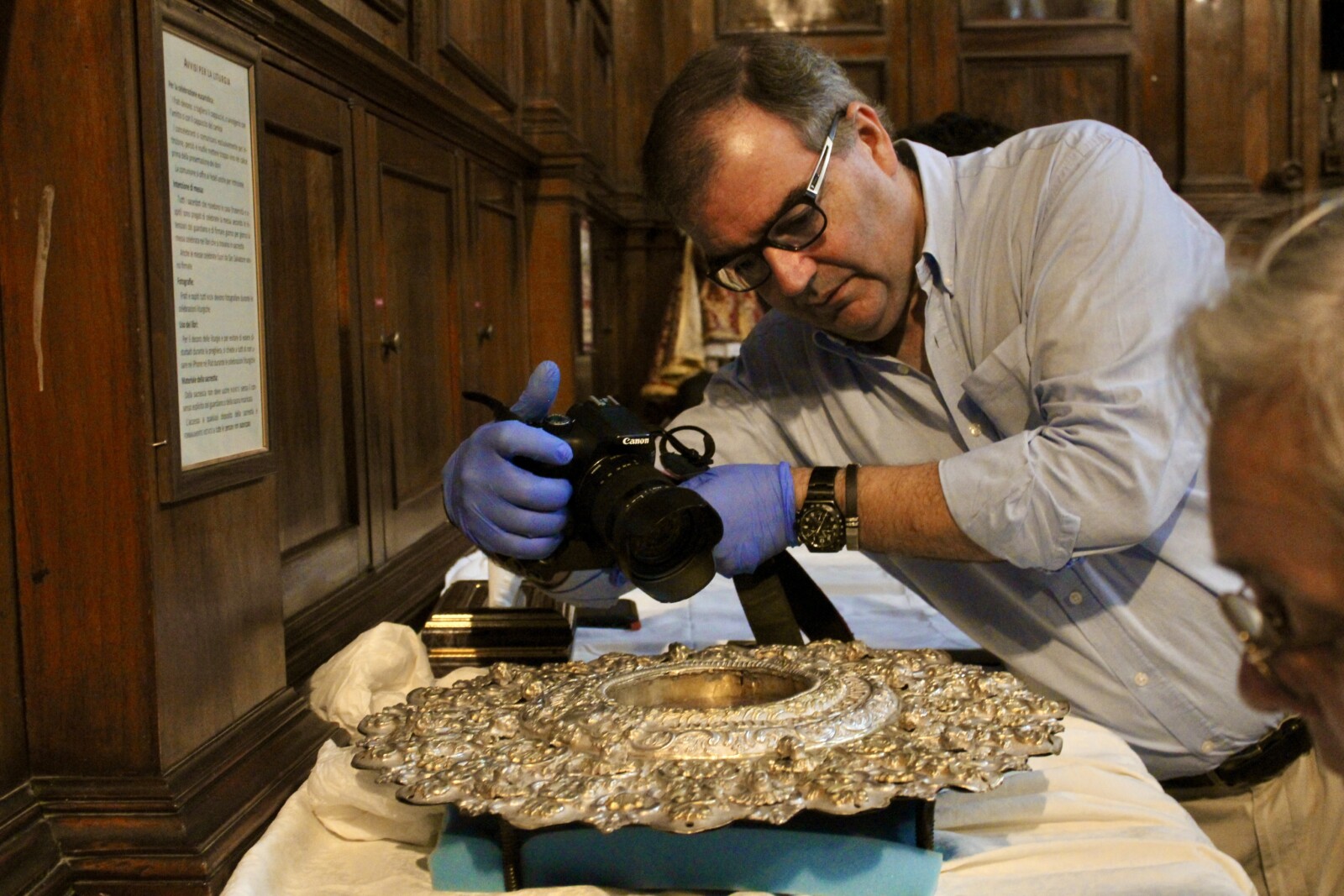
The next step for the project is the transportation of the artifacts, which should take place at the end of May 2023. This step will be followed by the restoration campaign of the objects, coordinated by experts from the José de Figueiredo Laboratory. If you have never been to Lisbon before, this might just be the time to mark your calendar for a short weekend in Portugal at the end of 2023.



